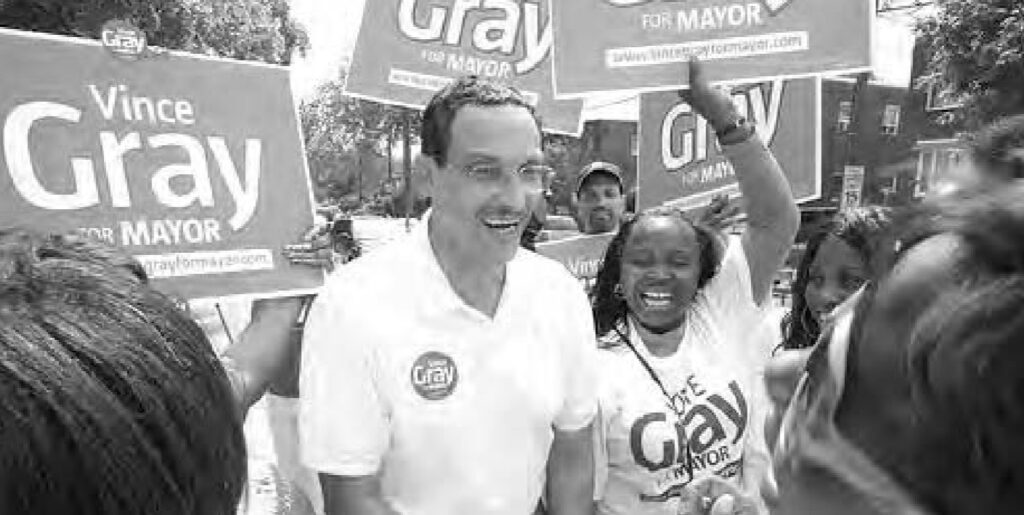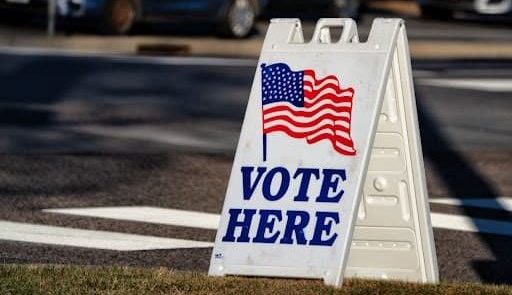New mayor will confront old challenges in serving homeless
On his way to a decisive Democratic primary victory over District Mayor Adrian Fenty, City Council Chairman Vincent C. Gray did not forget to make a campaign visit to a group of homeless people gathered in Franklin Square Park.
For some of the city’s homeless people and their advocates, a sense of bitterness lingers on that patch of urban land. They have not forgotten the shelter once housed in the historic Franklin School that overlooks the park. Amid protests and marches, Fenty closed Franklin School Shelter in 2008. Reaction to Fenty’s decision, to close the shelter as part of a larger plan to reform the city’s troubled homeless services program, mirrored in some ways feelings about the mayor’s approach to other ambitious reforms, such as tackling the city’s underperforming school system.
Some of the men who stayed at Franklin School joined the ranks of over 1,000 homeless people now housed in apartments through Fenty’s Housing First permanent supportive housing initiative, but others were not so lucky. They were moved to larger shelters, farther from the heart of the city and vital services. So Fenty’s initiative succeeded in helping some homeless men who stayed at the shelter, it sowed mistrust among others who felt confused.
Neil Donovan, executive director of the National Coalition for the Homeless said the lack of communication ended up alienating some of the very people Fenty was trying to help.
“His tragic flaw was that he failed to involve and communicate with homeless individuals about those changes, leaving homeless individuals to make their own decisions about why he was unable to follow through on his promises,” said Donovan. To make matters worse, Fenty’s intentions to help the homeless were also hampered by a failing economy and a reduction in federal funds to be used for homeless issues.

The people gathered in Franklin Square Park to meet Gray on that August day said they hoped for change from Gray and more understanding.
“We are a unique population,” said one woman, “and we need something to suit our needs.”
Whether Gray will be able to deliver such crucial relief remains to be seen. If he is elected mayor in November, as expected, he will inherit a growing homeless population, the financial constraints that dogged Fenty, and the roiling complexities and political pressures of serving the homeless.
Emblematic of challenges he will face as Mayor are the struggles, intrigue and funding shortages that haunt planning for the district’s 2010-2011 winter plan for the homeless that city officials are currently seeking to finalize.
The annual homeless count, conducted last January, found 6,529 homeless people in the District, a five percent increase over 2009. In spite of the successes of Housing First in moving homeless people to apartments, city officials say they expect to need more beds this winter than they did last winter. Complicating the task of providing those beds is the fact that the La Casa shelter, which has housed 72 emergency beds and 75 hypothermia beds, will be closing this winter to make way for a new residential development in the gentrifying Columbia Heights neighborhood in Northwest Washington.
Another challenge is finding emergency shelter space for families. Last winter, up to 200 families were crowded into a space at DC General Hospital intended for 135. And needs have steadily increased since then. Between April and June, 517 families have applied for shelter.
At a recent meeting on the winter plan, department of human services officials said that in anticipation of cold weather needs, they intend to move 100 families into housing and create space for 100 more at the hospital.
But advocates continue to worry about the adequacy of such arrangements.
Ward 6 City Councilmember Tommy Wells, who chairs the human services committee, ls is convinced there will be a problem keeping the homeless safe this winter.
Homeless advocate Scott McNeilly, staff attorney for the Washington Legal Clinic for the Homeless, is also concerned. “We have to find a backup plan.”
McNeilly wants to see a new building to replace LaCasa. And he questions the wisdom of placing more families at DC General. “There is a 75 unit building in Ward 4 that is ready to go.”
Wells blamed political opposition for keeping the Ward 4 building unavailable to needy families.
Laura Green Zeilinger, deputy director for program operations at DHS denied the existence of such a building.
“There is not a building in W4 that is available to be used as family housing,” she responded to Street Sense in an email.
Meanwhile, the winter is approaching.
Gray’s long experience in human services may be a help, some observers say. During the early 1990s, he headed the city’s sprawling Department of Human Services, overseeing services for the homeless, foster children, people living with AIDS, and juvenile justice. Gray closed down blighted “welfare hotels” used to house families for extended periods and increasing staffing levels for social workers overseeing child welfare cases. He also eliminated about 500 shelter beds and reduced spending on homeless services by at least $10 million, according to a Washington Post assessment of his term overseeing the department. Overall, Grays tenure of head of DHS received mixed reviews. Some have given Gray high marks for tackling deeply-entrenched problems at the department, while others have said he failed to effect a badly- needed transformation there.
When all is said and done, Tommy Wells said he does not see major differences between the way homeless issues will be handled under presumptive mayor Gray. The councilman believes in the importance of continuing the Housing First Program under Gray. The $19.2 million-program, which started out as a new initiative under Fenty has a goal to provide 2500 placements by 2014. But financial pressures will be a continuing reality.
The D.C. Council under Chairman Gray passed legislation to cut the District’s budget by $130.7 million in November 2008 due to the economic crisis. Now Gray is on the other side of that decision, and will soon have to run the city, and homeless programs, with the tight budget he helped impose. To keep the Housing First program afloat “will require an investment by the District to continue paying the rents on the apartments for about 1000 people now,” Wells said. Although the city has absorbed a large amount of that funding already, Gray must maintain a commitment to local funding, Wells stressed.
“The Housing First Program is something I have protected the funding for,” said Wells. “Even though we’ve made cuts, we’ve continued to fund the Housing First Program, so that is something I want to continue to support and grow.”





